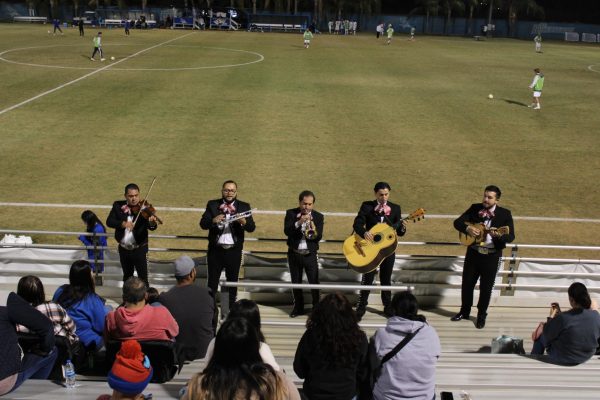The Dream Center opening is long overdue
October 2, 2019
Even though I am thrilled about the upcoming Dream Center opening on the CSU Bakersfield campus, the time it took to establish this resource center for DACA and AB540 students, the California Assembly Bill 540 which allows undocumented students to qualify for in-state tuition, reflects the lack of open support from students.
UC Berkeley has stayed one step ahead of CSUB by providing its undocumented students “full-time mental health therapist and legal aid assistance, free for the estimated 500 or so undocumented students there,” according to an EdSource.org article titled “Colleges expand services for undocumented students as legislation seeks more,” by Larry Gordon.
Although our campus is also undergoing the process of opening a Dream Center to offer similar services to our undocumented population, I cannot help but question why it has taken this long—3 to 4 years after Berkeley. Even Bakersfield College had a Dream Center two years ago to receive and help undocumented high school graduates—closer to Berkeley, leaving CSUB in the dust.
“CSUB should’ve had a space for undocumented students a long time ago. I guess it has taken a while because they thought there weren’t that many undocumented students to have their own space,” said Yoceline Aguilar, a junior sociology major and former president of the UNIR (United Now for Immigrant Rights) club.
It could be argued that there were no students pushing for a Dream Center to make the school aware that one was needed in the first place. However, Aguilar said she “went to the President’s Forum last fall semester,” representing UNIR and pushing for the center. There were a few students out there voicing their needs to the school.
Now that the center is here, another problem could arise from the same lack of communication and open support from students.
“I like CSUB, but there is something about the vibe,” said Carlos Avendano, a transfer student, Spanish major and Dreamer. He went on to say that he wishes we could “prepare an open Dream House for our future undocumented Roadrunners.”
An open Dream House is a great way to start building community within CSUB. Hosting an event at the Dream Center would promote the center and give information about all the resources it provides. Even people who are not undocumented could go and see what it really is about.
Andrea Guevara, political science major, junior, and current president of UNIR, said that she feels “safe enough” with the Dream Center on campus, but it has quite a way to go.
“A supportive environment, in which a student might choose to disclose [their status]” should be the ideal atmosphere schools should aim to create, as well as to “make yourself visible as an ally,” according to the article “Supporting Undocumented Students and Mixed-Status Families” by Bari Walsh, director of editorial strategy for the Harvard Graduate School of Education.
Forms of support come in all shapes and sizes and do not necessarily need to be expressed in impressive ways. For instance, showing up to the Dream House (if that ever happened) to learn more about it is a form of support. Even stopping by and offering a positive remark to the students or staff present can mean more than you think. Small gestures that seem insignificant can change a person’s day, week, or even their entire perspective.
CSUB is our home for most days of the week, and we need to make it as welcoming and comfortable as we possibly can for everyone. It is not enough to be quietly accepting of the Dream Center or of Dreamers, but rather must be visibly expressed to build trust and support for our students.







